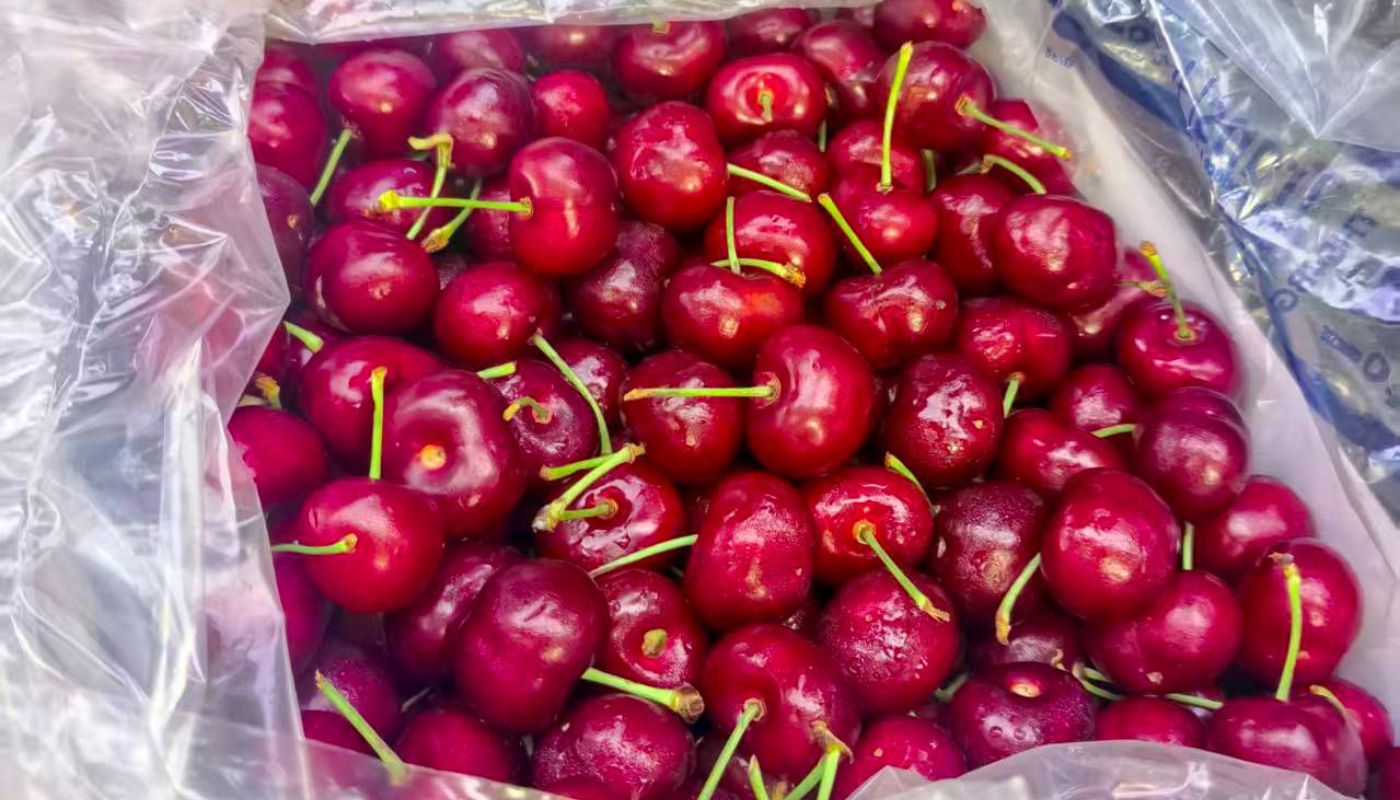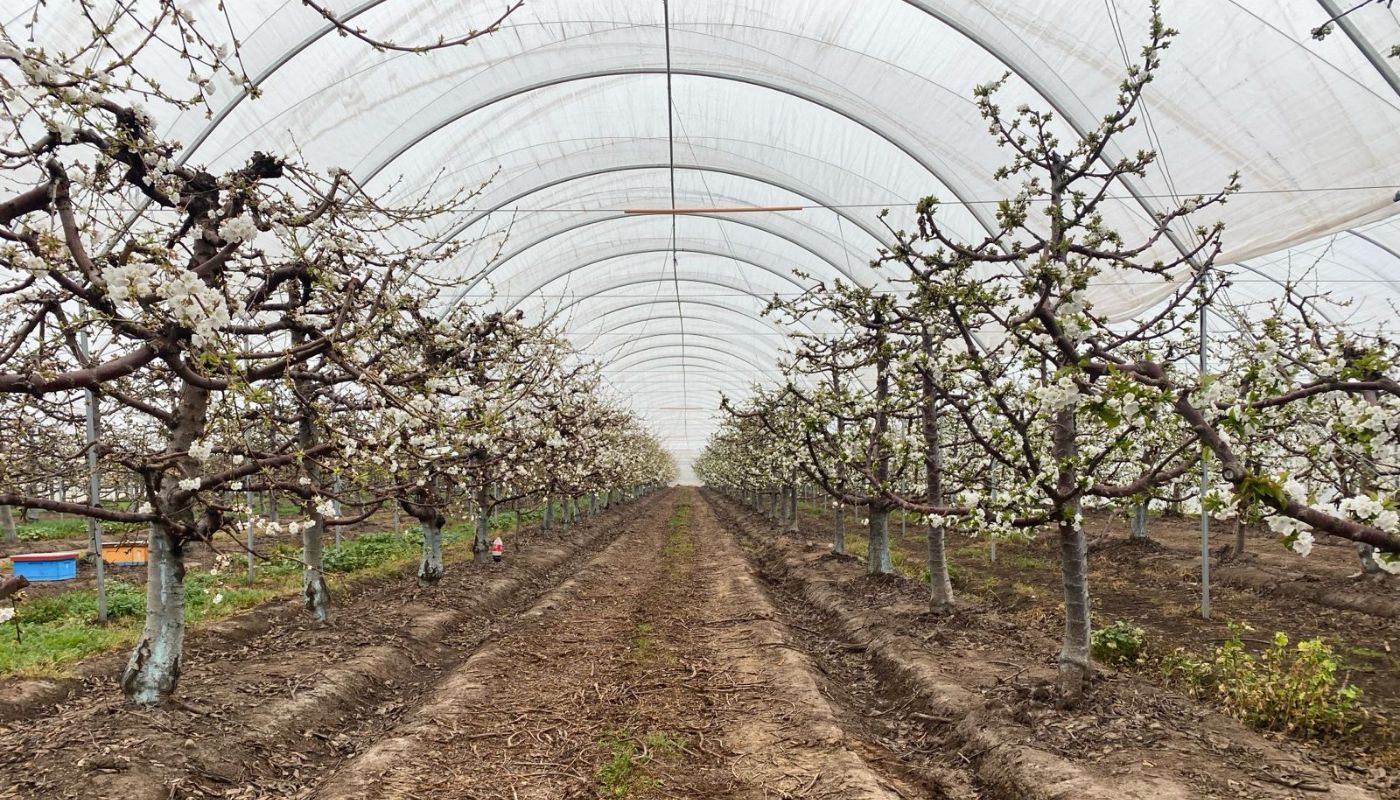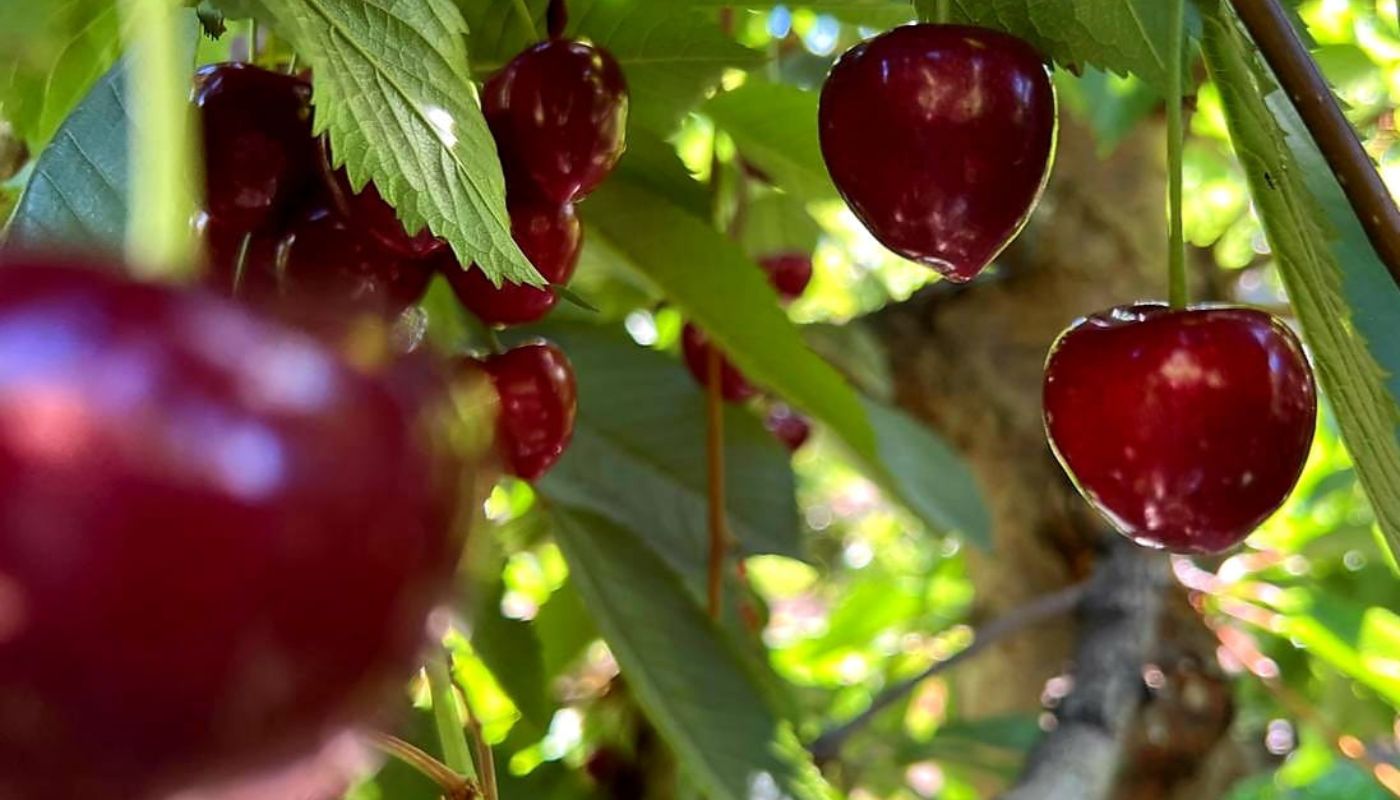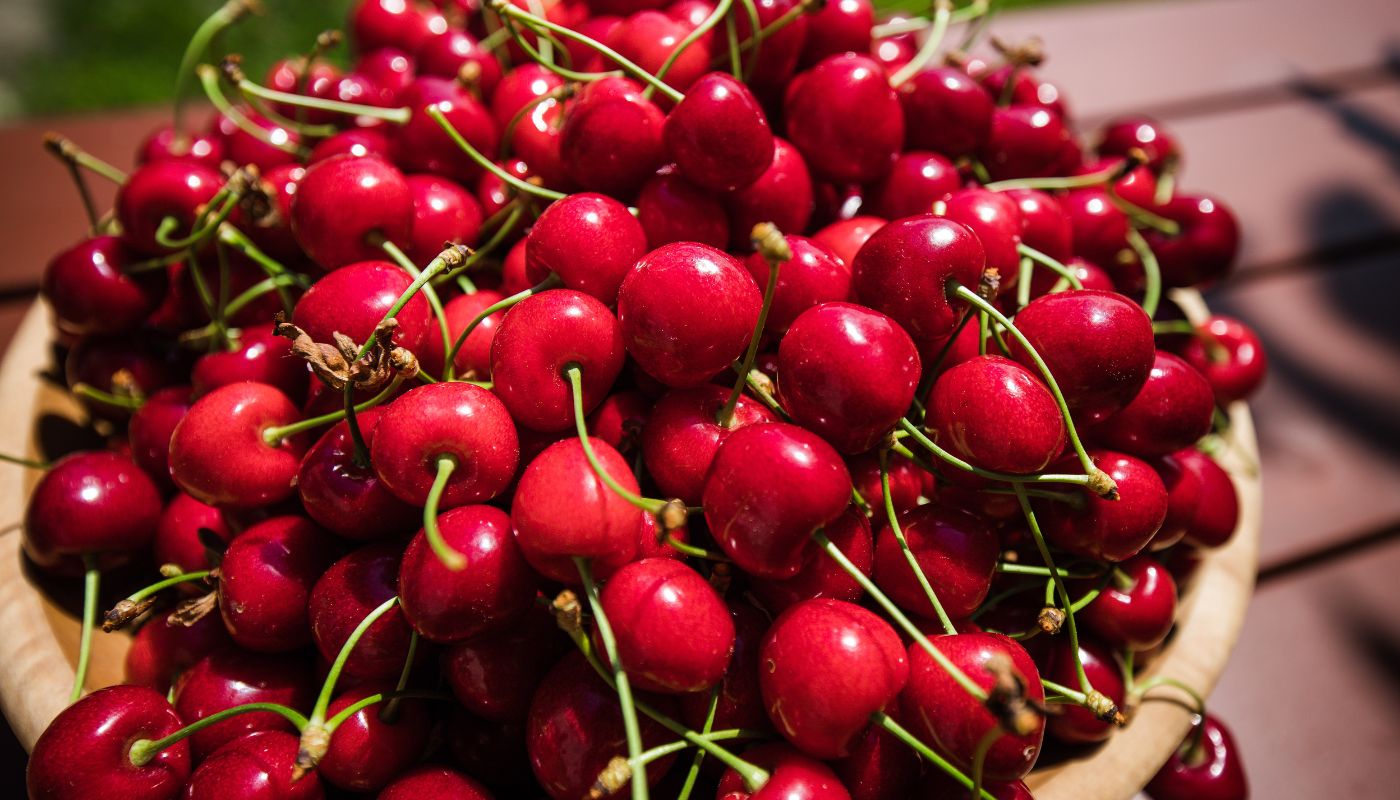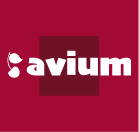Pollination and subsequent fertilization are essential for fruit production in cherry trees. The pollination process culminates when pollen is deposited on the stigma of the recipient flower, which initiates fertilization. During this stage, a pollen tube is formed that travels from the stigma and style to the ovary of the flower.
In the case of cherry trees, there are self-compatible (or self-fertile) varieties, such as Lapins, Santina, Skeena, and Staccato, and self-incompatible (or self-infertile) varieties, such as Regina, Kordia, and Bing.
Self-compatible varieties are capable of fertilizing themselves with their own pollen; however, self-fertility alone does not guarantee a high fruit set percentage, as there are varieties with low, medium, and high fruit set potential. Meanwhile, in self-incompatible varieties, even when pollen germinates on the stigma, flower style incompatibility prevents ovule fertilization, making cross-pollination necessary to ensure adequate pollination.
Regardless of the variety type, pollen movement, whether entomophilous (by insects) or anemophilous (by wind), is essential for efficient fertilization. Therefore, it is critical to consider both the flowering date and pollen compatibility between varieties (Table 1).
Table 1. Flowering and harvest window for the main cherry varieties planted in Chile. Avium 2023.

Likewise, incompatibility groups and genotypes are classified according to their flowering time as early, mid, and late (Table 2).
Table 2. Incompatibility groups of cherry varieties and flowering times (Negueroles and Wünsch, 2019).

It is important to note that all self-fertile varieties share the S4 allele, which provides complete genetic compatibility and universal pollen donor for any other variety. However, regardless of this characteristic, the varieties to be pollinated must be present at the same flowering time.
2. Factors for Good Pollination
2.1. Climatic Conditions
Climate is a determining factor in pollination success.
– Low temperatures during flowering can reduce fruit set due to lower pollinator activity and slow pollen tube growth (Thompson and Liu, 1973).
– High temperatures accelerate the degeneration of stigmas and ovules, decreasing the fruit set rate (Hedhly, Hormaza, and Herrero, 2004).
– Direct solar radiation (over 300 W m-2) at the entrances is key to stimulating bee flight and ensuring their pollinating activity.
Although these factors are not always controllable, the timely installation of hives and the use of compatible pollinator varieties from the beginning of flowering can greatly mitigate their effects.
2.2. Beekeeping Management and Current Regulations
The Chilean fruit industry has developed joint initiatives to optimize pollination efficiency, including the Pollinator Manual, prepared by ANPROS, FEDEFRUTA, and RAN F.G., which establishes good practices and current regulations:
Regulations (Exempt Resolution No. 8,196/2015)
– Annually declare the existence of apiaries to SIPEC during October.
– Maintain an internal record of hive movements, with apiary identification, origin, and installation and removal dates.
Beehive Handling Safety
– Prefer to move hives at night or early in the morning, ensuring adequate ventilation and stowed cargo.
– Have a first aid kit with antihistamines and injectable antidotes.
– Avoid inspections on the day of transfer to reduce bee aggression.
Beehive Quality Parameters (Chilean Standard 3255 – 2011)
– Minimum 8 frames with bees.
– ≥ 3.5 frames with brood (1.5 open and 2 closed).
– Pest and disease-free.
– ≥ 50 bees/minute entering per entrance.
2.3. Installation and management on the property
– Hives must be brought in at the white button stage (Figure 1).
– Provide the beekeeper with a map showing the location and number of hives.
– Ensure nearby water sources (or install drinking fountains).
– Keep hives in dry, sunny locations and on structures that insulate them from the ground.
– Avoid excessive personnel traffic and apply agrochemicals in the afternoon/evening.
Figure 1. White Bud. Phenological stages of cherry trees in Chile. Source: Pomanova Corporation 2020.

2.4. During Pollination
- Ensure hives are not receiving water from irrigation or other nearby sources.
- If the area is humid, ask the beekeeper to relocate the hive.
- Avoid the passage of agricultural personnel near the hives.
- Prefer the application of agrochemicals during the evenings or at night.
- Do not handle bees without the beekeeper’s authorization.
2.5. Field Pollination Control
- The distance between groups of hives should not exceed 200 meters.
- Avoid installing hives on roads with high pedestrian or vehicular traffic.
- Hives should not be in direct contact with the ground; they should be mounted on pallets, trestles, or other structures that insulate them from the ground, weeds, and ant or rodent attacks.
- Prefer dry, sunny locations for hives, which encourages bees to work better.
3. Targeted Pollen Application
- These techniques do not replace the use of bees or bumblebees.
- Identify areas of the orchard with set problems to increase the number of hives and pollen.
- Pollen should be kept in the cold chain, with temperatures between -15°C and -10°C.
- Ask the supplier to match the pollen dose to the amount you will use that day to avoid unnecessarily thawing pollen.
- Do not apply pollen directly after removing it from the freezer; it is better to gradually increase its temperature.
- Identify hives with the highest activity; it is recommended to use only 50% of the hives for the application.
Figure 2. Pollen application at entrances. Photo: Avium 2021 Technical Team.

During Application:
- Begin application when the first bees begin their flight in the morning.
- Begin application when the flowers are 20% open.
- Always wear personal protective equipment such as a veil, gloves, and a white coverall.
- Divide the recommended dose into 2 or 3 daily applications.
- Avoid application in unfavorable weather conditions such as heavy fog, drizzle, or rain.
4. New Technologies
- Recent research conducted by Avium’s R&D department supports the idea that assisted pollination strategies using “Biopollen” technology at times when flowers are 30-70% open increase fruit set in cherry trees by 5% to 10% in cultivars such as Santina, Kordia, and Regina.
References
– Carlos Tapia: Personal communication.
– “Cherries, Botany, Production and Uses,” edited by José Quero-García, Amy Lezonni, Joanna Pulawska, and Gregory Lang.
– Gil, G. (2012). Fruit Production: Fruits from Temperate and Subtropical Climates. Ediciones UC, Chile.
– De la Cuadra Infante, S., and Rodríguez, P. (2019). Agricultural Crop Pollination Manual.
– Greenpeace (2013). Dangers for Pollinators and Agriculture in Europe.
– Rodrigo, J., Negueroles, J., & Wünsch, A. (2019). Choosing Pollinator Varieties in Cherry. Journal of Fruit Growing, 70, 68–71.
– Avium Team (November 13, 2020). Flowering and Harvest Window for the Main Cherry Varieties Planted in Chile. Smartecherry (Table 2).
